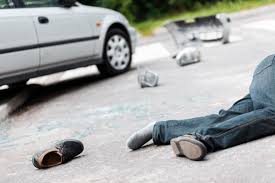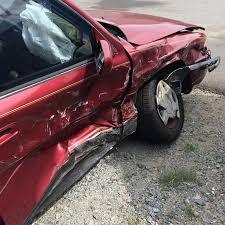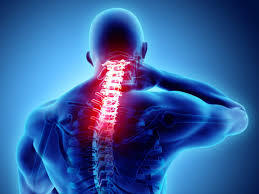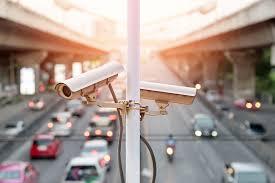Who’s At Fault When a Pedestrian Is Hit by a Car?
There’s a widespread myth that pedestrians always have the right-of-way — and that drivers are automatically at fault when a pedestrian is struck. While careless drivers are frequently responsible for pedestrian accidents, it’s not always that simple. Pedestrians, just like drivers, must follow traffic laws and exercise caution when sharing the road.
If you were injured in a pedestrian accident, determining who was at fault is critical to building a strong injury claim. At Applebaum Accident & Injury Law, we fight to uncover the truth and hold negligent parties fully accountable for the harm they cause.
The Dangerous Disconnect Between Pedestrians and Traffic Infrastructure
Pedestrian fatalities are a growing crisis in the United States. According to the CDC, more than 7,000 pedestrians lose their lives each year in traffic crashes — and over 100,000 more are injured badly enough to require emergency medical care.
These tragedies often happen in urban areas or on high-speed roads without proper pedestrian infrastructure. At night, when visibility is low and driver alertness tends to decrease, the risk becomes even greater.
Organizations like Smart Growth America point to a deeper problem: outdated transportation systems built to move cars — not protect people. Low-income neighborhoods often lack basic safety features like crosswalks, sidewalks, or traffic-calming designs, putting residents at greater risk.
Legal Duty of Care: Drivers AND Pedestrians Must Obey the Law
Everyone who uses the road — whether behind the wheel or on foot — owes others a duty of care. That means following the rules of the road and acting reasonably to avoid causing harm.
Drivers’ Responsibilities Include:
-
Driving at safe speeds for the conditions
-
Yielding to pedestrians at crosswalks (even unmarked ones)
-
Stopping for school buses with flashing lights and extended stop arms
-
Avoiding distractions like texting
-
Never driving under the influence of drugs or alcohol
Pedestrians Also Have Legal Duties, Including:
-
Using crosswalks and obeying pedestrian signals
-
Not darting into traffic unexpectedly
-
Avoiding jaywalking or crossing diagonally
-
Making sure it’s safe before stepping into the roadway
Failing to follow these laws can lead to tragic — and legally complicated — outcomes.
When the Driver Is At Fault
In many pedestrian accidents, the driver’s negligence is to blame. Some of the most common causes include:
-
Speeding: Higher speeds reduce reaction time and increase the force of impact. Many pedestrian fatalities involve drivers who were going too fast — even if they weren’t technically over the speed limit.
-
Distracted Driving: Texting, using a GPS, or even eating behind the wheel can prevent drivers from seeing a pedestrian in time to stop.
-
Impaired Driving: Alcohol and drugs severely reduce a driver’s ability to react, stay in their lane, and make safe decisions.
-
Failure to Yield: Drivers who ignore crosswalks, pass stopped school buses, or go around vehicles yielding to pedestrians put lives at serious risk.
If a driver’s reckless or careless behavior caused your injuries, you have the legal right to seek compensation.
When the Pedestrian May Be at Fault
Pedestrians aren’t always blameless. If someone steps into traffic without looking or crosses against the light, they may be considered partially or fully at fault. This includes situations where:
-
The pedestrian suddenly entered a travel lane without warning
-
They crossed outside of an intersection or against a red signal
-
They were intoxicated or impaired while walking
-
They wore dark clothing in poorly lit conditions, making them hard to see
Even if a pedestrian is partially at fault, compensation may still be available under Florida’s comparative fault rules — but it’s important to speak with a lawyer to protect your rights.
Why Fault Matters
Determining who caused the accident is key to your injury claim. If the driver is at fault, their insurance company may be responsible for covering your medical bills, lost wages, and pain and suffering.
But insurance companies don’t just hand over fair compensation. They’ll look for ways to shift the blame and minimize payouts. That’s why having a skilled pedestrian accident lawyer on your side can make all the difference.
Can You Use PIP Insurance After a Pedestrian Accident in Florida?
Yes. In Florida, Personal Injury Protection (PIP) insurance is required for all registered drivers and provides coverage for medical expenses and lost wages — regardless of who caused the accident.
If you’re hit by a car while walking, your own PIP policy (or one held by a household member) may cover some of your expenses. However, PIP benefits are limited and often won’t fully compensate you for serious injuries.
In those cases, you may be eligible to file a claim against the at-fault driver’s liability insurance — especially if your injuries meet Florida’s “serious injury” threshold.
What If You Were Hurt in a Hit-and-Run Pedestrian Accident?
Unfortunately, hit-and-run crashes involving pedestrians happen far too often. If the driver fled the scene, you may still have legal options.
You might be able to recover compensation through your own uninsured motorist coverage, medical payments coverage, or PIP. And if the at-fault driver is eventually identified, a claim can be filed against their insurance as well.
An experienced attorney can help investigate your case, locate available insurance coverage, and pursue every legal avenue to get you paid.
Let Applebaum Accident & Injury Law Determine Who’s Liable — and Fight for What You Deserve
When a pedestrian is injured, insurance companies are quick to downplay responsibility. But at Applebaum Accident & Injury Law, we know the law — and we know how to prove fault.
From securing traffic camera footage and witness statements to negotiating with insurers and filing lawsuits when necessary, our firm builds strong cases that deliver real results.
If you or a loved one was struck by a car, don’t leave your future to chance. Call (855)-Call-Paul ,  Applebaum Accident & Injury Law today for a no-obligation consultation. We’ll help you understand your rights, explore your options, and fight to recover the maximum compensation you deserve.
Applebaum Accident & Injury Law today for a no-obligation consultation. We’ll help you understand your rights, explore your options, and fight to recover the maximum compensation you deserve.



